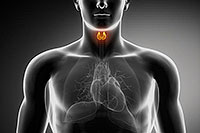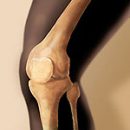The pituitary disease should be considered as the cause of the state «Hyperprolactinemia». The secondary form is noted with various endocrine diseases and the use of some drugs. Functional, idiopathic, transient hyperprolactinemia - what differences?
Content
Hyperprolactinemia
— a state in which the increased content of prolactin is marked or as it
often call «Milk hormone». Such a disease is peculiar to the female floor
aged 25-40 years and rarely found in men. Hyperprolactiakiyia syndrome
manifests young women to release milk from informs outside of state
pregnancy, impairment or complete lack of menstruation and infertility. Growth
The pituitary tumors are manifested by violation, girsutism — Increased sophistication
bodies, acne, headache. In this case, there is a decline in this condition
sexual attraction, sometimes anomalous milk is noted from
hypertrophied chest glasses.

Causes of hyperprolactiamia
I can be:
- Benign pituitary tumor — Considering
as the main and most common reason; - Hypothyroidism — Reducing the function of the thyroid
glands; - Chest damage due to burn,
injuries, herpes; - Polycystic ovarian;
- liver cirrhosis and chronic renal
failure; - diseases and brain tumors;
- Reception of contraceptive preparations and
Antidepressant.
According to
Classifications distinguish:
-
primary
or the pathological form of illness with excess synthesis prolactin at
hyperfunctions and adenome pituitary - hyperprolacthemistry secondary determines an endocrinologist or a gynecologist with
various endocrinological issues, among them: premenopausal,
Premenstrual, adreno-genital syndromes, as well as Stein-Levental Syndrome.
The same form of the disease occurs in young women more often after childbirth or
abortion, when using hormonal and Navy, some medicinal
drugs, in the case of the pathology of the kidneys, liver or pancreas.
Functional hyperprolactinemium is usually associated with endometriosis, Misa
uterus, inflammatory processes, occurs in hypothyroidism, syndrome
Polycystic ovaries and is not related to changes in the pituitary. She can appear
After operations or injuries of the chest, as well as frequent instances of the cavity
Uterma and abortion. The relationship between the reception of certain medicinal
Preparations in uncontrolled large doses: antidepressants, neuroleptics, funds
To normalize blood pressure, estrogen and oral contraceptives
with hyperprolactium
Functional. Reducing the dose of the drug leads to normalization of the level
Hormone in the blood.
Idiopathic
hyperprolactinemia
Causes
The emergence of idiopathic
hyperprolactinemia is definitely not identified, often it happens without visible
The grounds, it is clear only one thing that it is in this form of the disease that only rises
The function of the cells of the pituitary without its hypertrophy.
Diagnostics
This syndrome is based on the study of the concentration of the hormone prolactin in the blood,
which is carried out on the 5-7th day of the menstrual cycle at a certain time
day, usually in the morning. To identify the pathology of the pituitary
Radiography of skull and examination of the Turkish saddle, very informative CT and
MRI. Diagnosis and differential diagnosis conducts a gynecologist,
Endocrinologist, ophthalmologist and therapist with:

- the adenome of pituitary and prolactinity;
- bronchogenic cancer;
- Parasellalar region tumors;
- polycystic ovarian syndrome;
- physiological hyperprolactinemia in the period
breastfeeding or pregnancy; - Pharmacological — associated with reception
a number of drugs; - primary hypothyroidism;
- chronic renal failure;
- Cirrhosis of the liver.
Transit
hyperprolactinemia
Transient hyperprolacthemistry sometimes have to celebrate women with
Regular menstruation, it is manifested by a headache by type of migraine,
dizziness, an increase in blood pressure, as it happens when
neurocirculatory dystonia, and is detected in 50% of women with this pathology.
It is noted that the transit-elevated level of prolactin is often the cause
the lack of lutein phase of the menstrual cycle, the absence of ovulation, and
Consequently — infertility. This state suggests a three-month course
Therapies and dynamic control of the level of prolactin in the blood.









